Dogs
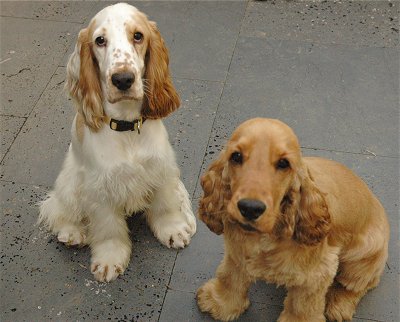
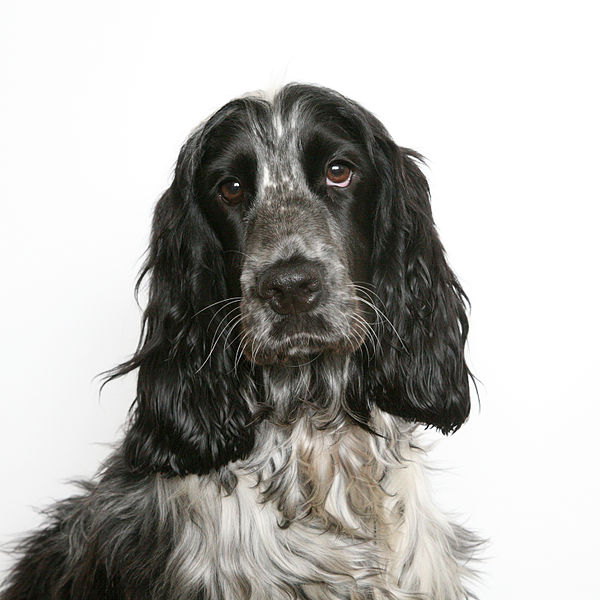


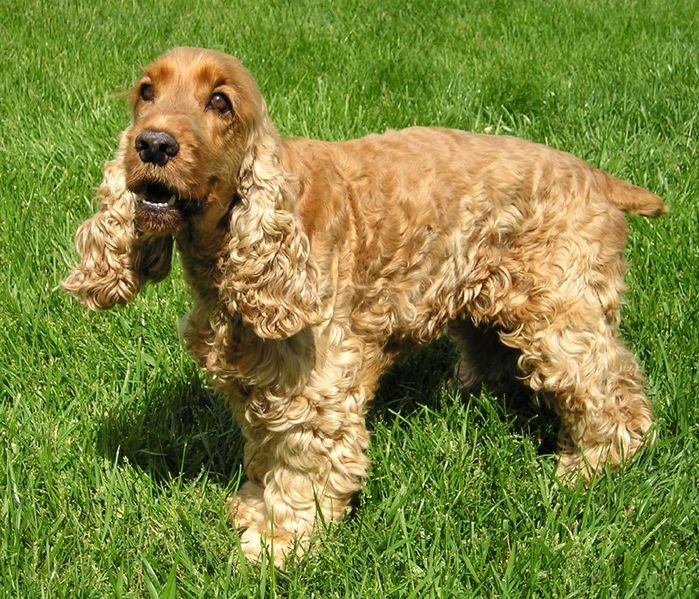 Outside the US, the breed is usually known simply as the Cocker Spaniel, as is the American Cocker Spaniel within the US. Due to the breed's happy disposition and continuously wagging tail, it has been given the cute nickname "merry cocker". They can be also dominant and loyal to their companion. Their health issues are typical for a purebred dog breed; however they are closely associated with rage syndrome even though cases are really quite rare. The word cocker is commonly held to stem from their use to hunt woodcock.
Outside the US, the breed is usually known simply as the Cocker Spaniel, as is the American Cocker Spaniel within the US. Due to the breed's happy disposition and continuously wagging tail, it has been given the cute nickname "merry cocker". They can be also dominant and loyal to their companion. Their health issues are typical for a purebred dog breed; however they are closely associated with rage syndrome even though cases are really quite rare. The word cocker is commonly held to stem from their use to hunt woodcock.
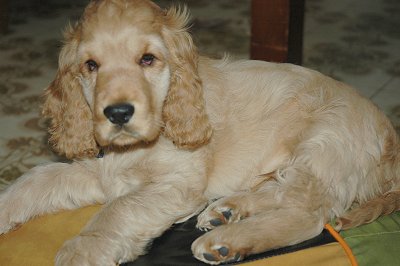


The English Cocker Spaniel is similar to the English Springer Spaniel and at first glance the only major difference is the larger size of the Springer. However English Cockers also tend to have longer, and lower-set ears than English Springers. In addition Springers also tend to have a longer muzzle, their eyes are not as prominent and the coat is less abundant.
Colour
 Breed standards restrict dogs to certain colours for the purposes of conformation showing (dependent on country), whereas working Cockers can be any of a wide variety of colours. For instance, the breed standard of the United Kingdom's Kennel Club states that in solid colours, no white is allowed except for on the chest.
Breed standards restrict dogs to certain colours for the purposes of conformation showing (dependent on country), whereas working Cockers can be any of a wide variety of colours. For instance, the breed standard of the United Kingdom's Kennel Club states that in solid colours, no white is allowed except for on the chest.
They come in solid (or "self"), particolour, and roan types of markings. The colours themselves in the breed consist of black, liver with brown pigmentation, red with black or brown pigmentation, golden with black or brown pigmentation, sable, silver, ash, black and tan, liver and tan, blue roan, liver roan, orange roan with black or brown pigmentation, lemon roan with black or brown pigmentation, black and white ticked, liver and white ticked, orange and white ticked with black or brown pigmentation, lemon and white ticked with black or brown pigmentation, black and white,


Rage Syndrome

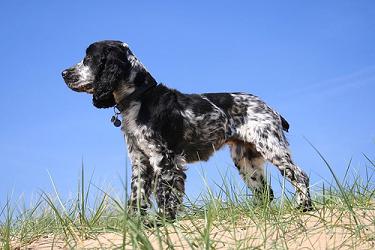
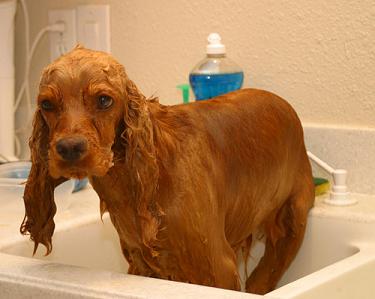
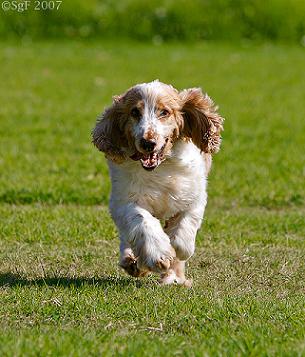
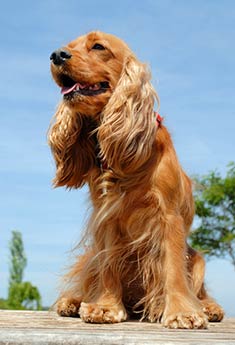
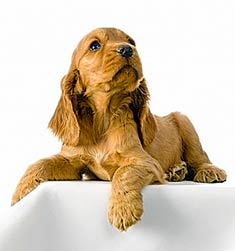
The sport of conformation showing began in earnest among spaniels after the Spaniel Club was formed in 1885. When showing, the new Springer and Cocker, both were in the same class until The Spaniel Club created breed standards for each of the types. The Kennel Club separated the two types eight years later. Since then, the Springer and Cocker enthusiasts have bred in the separate traits that they desired. Today, the breed differ in more ways than weight alone.
At Crufts, the English Cocker Spaniel has been the most successful breed in winning Best in Show, winning on a total of seven occasions between 1928 and 2009, with wins in 1930, 1931, 1938, 1939, 1948, 1950 and 1996. In addition, the breed make up three of the four winners who have won the title on more than one occasion with all three coming from H.S. Lloyd's Ware kennel. Due to World War II, the English Cocker Spaniel managed to be the only breed to have won the title between 1938 and 1950, although the competition was only held on four occasions during that period.
American Cocker Spaniel



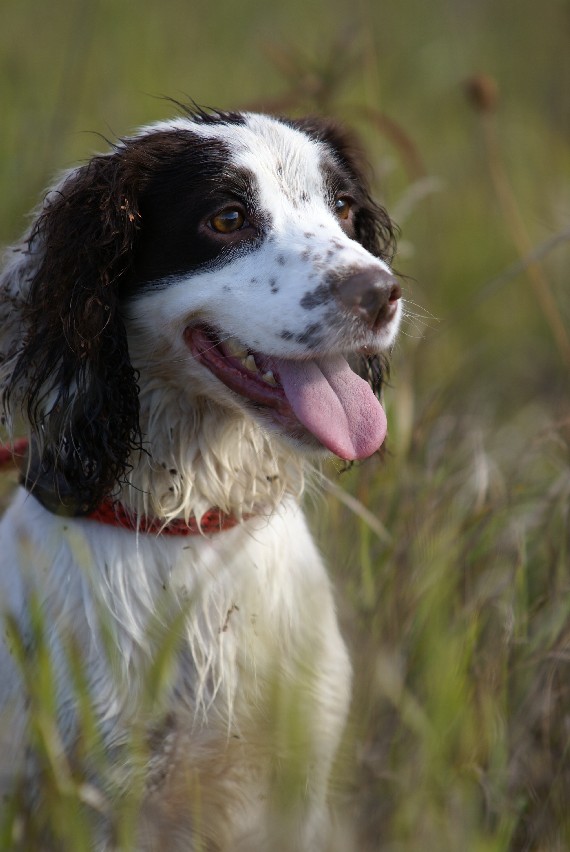
 Cocker Spaniel refers to two different breeds of dogs of the Spaniel dog type, both of which are commonly called simply Cocker Spaniel in their countries of origin. They were bred as gun dogs, using their noses to methodically cover low areas near the handler to flush ground-dwelling birds into the air. They then use their eyes to follow the bird to where it lands, then rushing over and, using their noses if necessary, gently pick up the bird and drop it somewhere near the handler.
Cocker Spaniel refers to two different breeds of dogs of the Spaniel dog type, both of which are commonly called simply Cocker Spaniel in their countries of origin. They were bred as gun dogs, using their noses to methodically cover low areas near the handler to flush ground-dwelling birds into the air. They then use their eyes to follow the bird to where it lands, then rushing over and, using their noses if necessary, gently pick up the bird and drop it somewhere near the handler.
Like other flushing dogs, Cocker Spaniels make great family house pets, but if used in this way and not as gun dogs, or if not given some other outlet for their natural urge to flush and upland retrieve, they tend to get into trouble by attempting to act out these behaviors indoors or in another inappropriate setting with objects that remind them of birds, often light objects such as sponges or paper, or become depressed, food-obsessed, or fat.
Description
Temperament
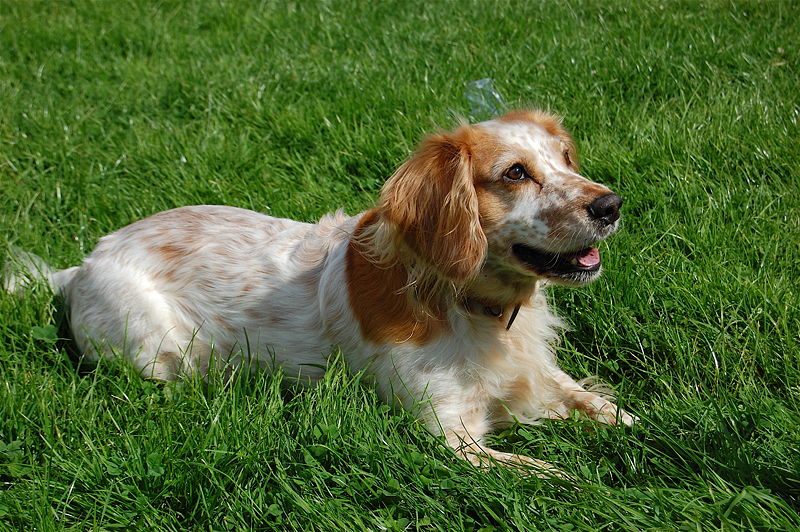
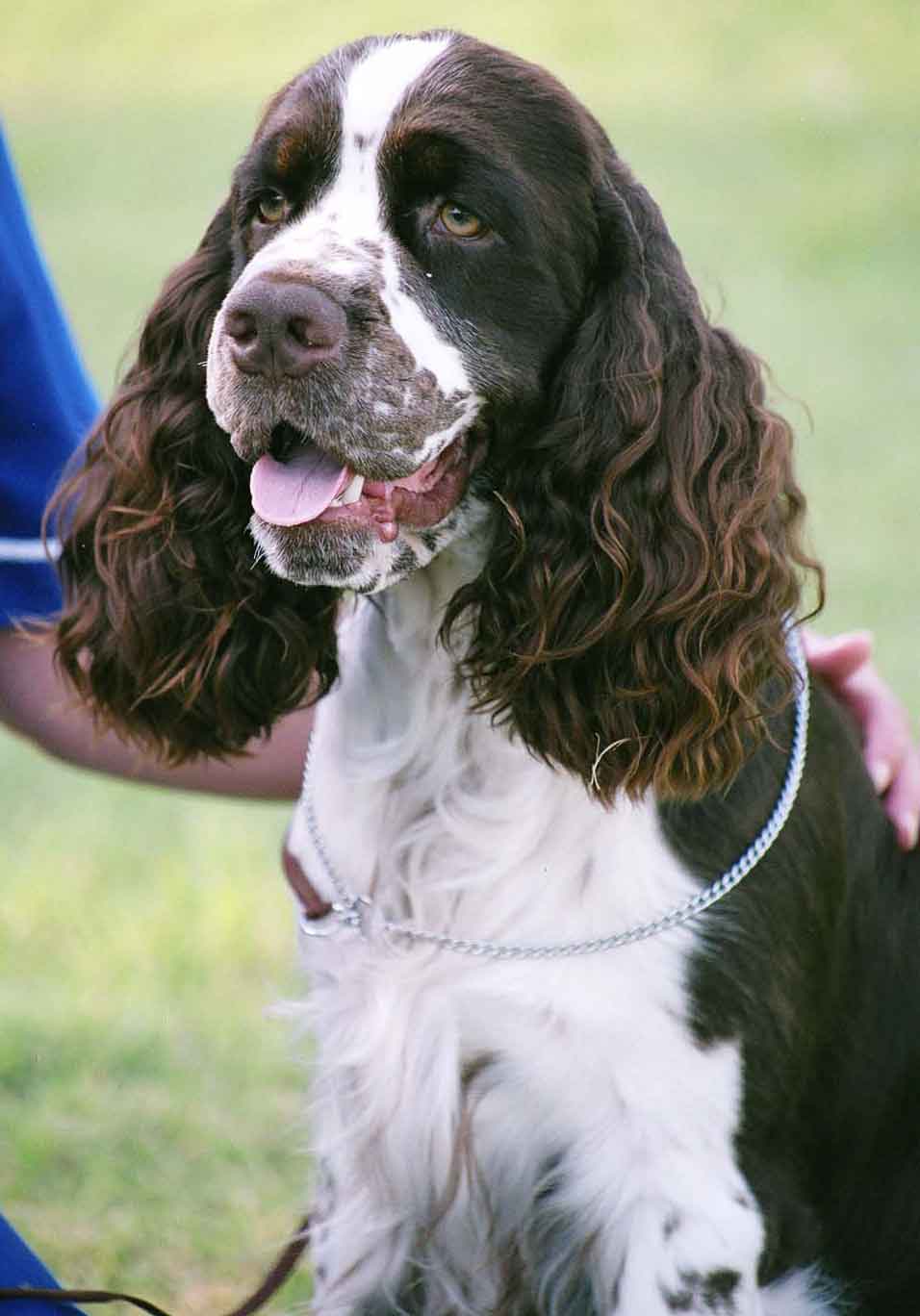
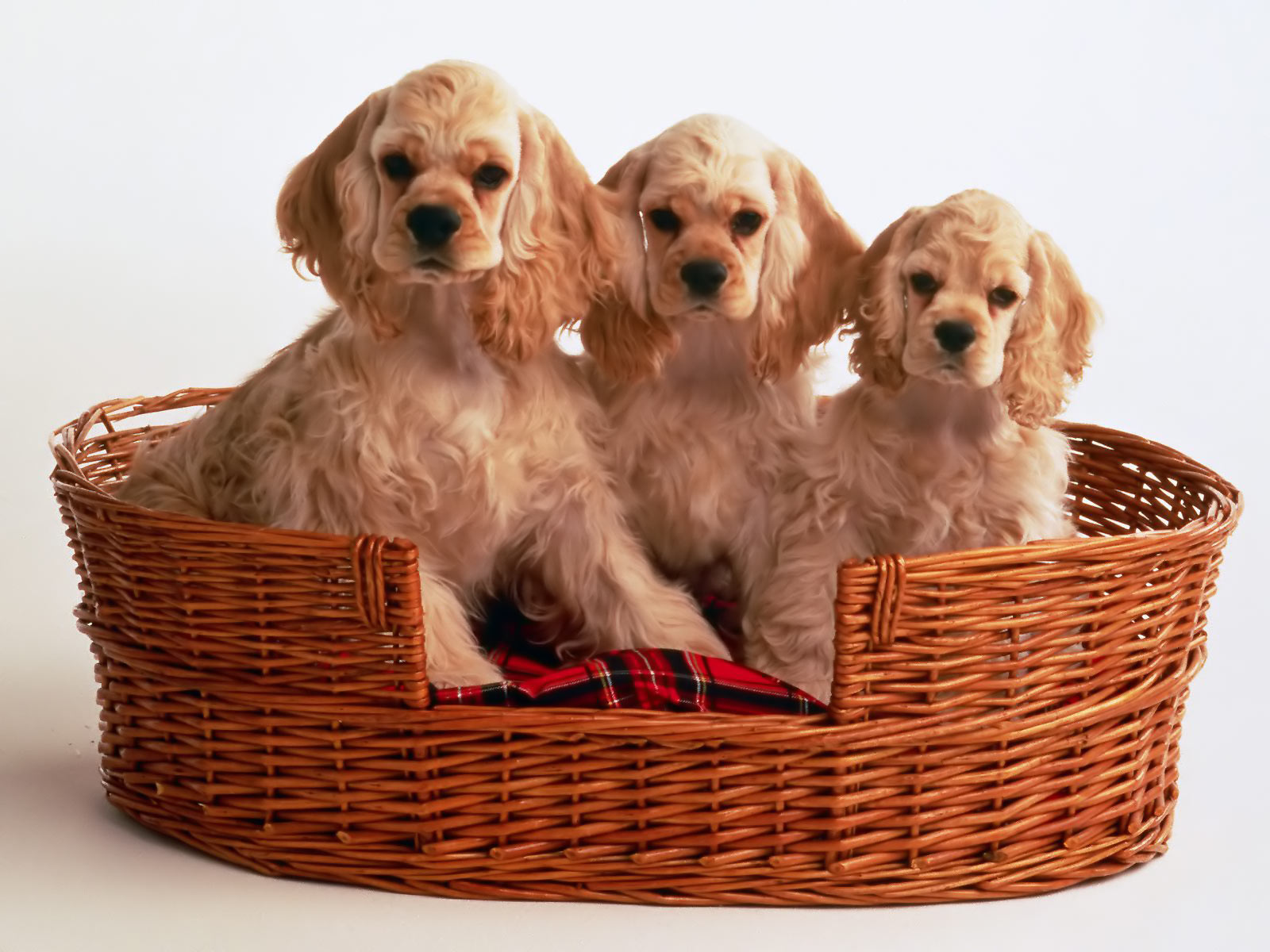

Regular combing and brushing of the coat is important. Coat types vary within the breed. Some coats have an excess amount of cottony hair and are prone to matting, while others are more silky and flat-laying and are less prone to matting. Bathe or dry shampoo as necessary. Check the ears for grass seeds and signs of infection. Clean out excess wax regularly. Brush the hair on the feet down over the toes and trim it level with the base of the feet. Trim the hair around the pads, but not between the toes. Brush out burrs and tangles after the dog has been playing in the grassy fields or woods. This breed is an average shedder.
Origin
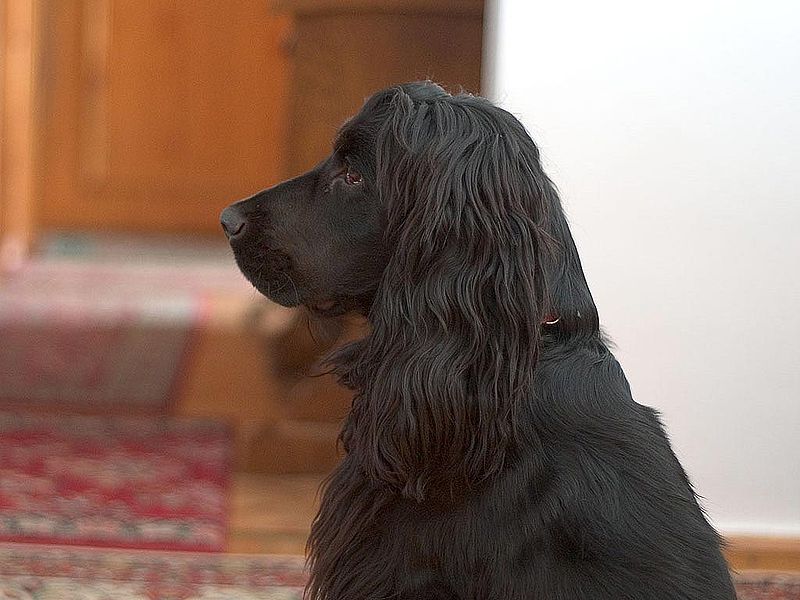
- The Cocker Spaniel - The Dog That Has A Perm - Family - Pets
The wavy coat of the Cocker Spaniel is the envy of numerous that pay dearly to attain all those lake in the type of a salon perm. But in case associated with the Cocker Spaniel, this wavy wild hair seemingly herbal and also only 1 belonging to the noteworthy...
- Cocker Spaniel Breed Profile - Family Members - Pets
All breeds have their heroes - people canines that stand out as exemplary examples of the breed and the Cocker Spaniel is no many different. For the Cocker Spaniel she was properly groomed, immaculately well behaved, had a fondness for pasta with a...
- Cocker Spaniel Breed Profile - Family Members - Pets
All breeds have their heroes - people canines that stand out as exemplary examples of the breed and the Cocker Spaniel is no many different. For the Cocker Spaniel she was properly groomed, immaculately well behaved, had a fondness for pasta with a...
- American Cocker Spaniel
HistoryThe Cocker Spaniel dates back as far as the 14th century. The breed originated from the English Cocker Spaniels which were brought to the United States. The Spaniels were bred down in size and given the name American Cocker Spaniels,...
- American Cocker Spaniel Small Breed Dog
The American Cocker Spaniel is a medium size breed of dog. It is one of the Spaniel type breeds, similar to the English Cocker Spaniel, and was originally bred as a gun dog. In the United States, the breed is usually referred to as the Cocker Spaniel,...
Dogs
English Cocker Spaniel small dog breed



The English Cocker Spaniel is a breed of gun dog. The English Cocker Spaniel is an active, good-natured, sporting dog, standing well up at the withers and compactly built. There are "field" or "working" cockers and "show" cockers. It is one of several varieties of spaniel and somewhat resembles its American cousin, the American Cocker Spaniel, although it is closer to the working-dog form of the Field Spaniel and the Springer Spaniel.
 Outside the US, the breed is usually known simply as the Cocker Spaniel, as is the American Cocker Spaniel within the US. Due to the breed's happy disposition and continuously wagging tail, it has been given the cute nickname "merry cocker". They can be also dominant and loyal to their companion. Their health issues are typical for a purebred dog breed; however they are closely associated with rage syndrome even though cases are really quite rare. The word cocker is commonly held to stem from their use to hunt woodcock.
Outside the US, the breed is usually known simply as the Cocker Spaniel, as is the American Cocker Spaniel within the US. Due to the breed's happy disposition and continuously wagging tail, it has been given the cute nickname "merry cocker". They can be also dominant and loyal to their companion. Their health issues are typical for a purebred dog breed; however they are closely associated with rage syndrome even though cases are really quite rare. The word cocker is commonly held to stem from their use to hunt woodcock.Description
The English Cocker Spaniel is a sturdy, compact, well-balanced dog. It has a characteristic expression showing intelligence and alertness. Its eyes should be dark and its lobular ears should reach the tip of the nose when pulled forward. Today, a significant difference in appearance exists between field-bred and conformation show-bred dogs. The Cocker's tail is customarily docked in North America. In countries where docking is legal, the tail is generally docked at about 4–5 inches (10–13 cm) in field-bred dogs while show dogs generally are docked closer to the body. Docking is now illegal in Australia, South Africa and Scotland. In England and Wales, docking can only be carried out on dogs where the owners have proved that the dogs will be used as working or shooting dogs.
The breed standard indicates that the males of the breed are on average between 15.5–16 inches (39–41 cm) at the withers with the females a little smaller, growing to between 15–15.5 inches (38–39 cm). Both males and females of the breed weigh approximately 13–14.5 kgs (28–32 lbs). American Cocker Spaniels are smaller, with the males being on average between 14.2–15.4 inches (36–39 cm), and females again being smaller on average at between 13.4–14.6 inches (34–37 cm), both weighing approximately 11–13 kgs (24.3–28.6 lbs). The closely related English Springer Spaniels are larger than either types of cockers, growing to between 18.9–19.7 inches (48–50 cm) for the females, and 19.3–20.1 inches (49–51 cm) for the males, and weighing between 23–25 kgs (50.7–55.1 lbs).

The English Cocker Spaniel is similar to the English Springer Spaniel and at first glance the only major difference is the larger size of the Springer. However English Cockers also tend to have longer, and lower-set ears than English Springers. In addition Springers also tend to have a longer muzzle, their eyes are not as prominent and the coat is less abundant.
Colour
 Breed standards restrict dogs to certain colours for the purposes of conformation showing (dependent on country), whereas working Cockers can be any of a wide variety of colours. For instance, the breed standard of the United Kingdom's Kennel Club states that in solid colours, no white is allowed except for on the chest.
Breed standards restrict dogs to certain colours for the purposes of conformation showing (dependent on country), whereas working Cockers can be any of a wide variety of colours. For instance, the breed standard of the United Kingdom's Kennel Club states that in solid colours, no white is allowed except for on the chest.They come in solid (or "self"), particolour, and roan types of markings. The colours themselves in the breed consist of black, liver with brown pigmentation, red with black or brown pigmentation, golden with black or brown pigmentation, sable, silver, ash, black and tan, liver and tan, blue roan, liver roan, orange roan with black or brown pigmentation, lemon roan with black or brown pigmentation, black and white ticked, liver and white ticked, orange and white ticked with black or brown pigmentation, lemon and white ticked with black or brown pigmentation, black and white,

liver and white with brown pigmentation, orange and white with black or brown pigmentation, lemon and white with black or brown pigmentation. Of the solid colours, sable is considered rare, and is classified by some countries as being a type of particolour on account of it's mixed hair shafts. White is black/brown pigmentation is also considered rare, and is also usually classified as a particolour too. In addition a silver/ash colour, usually associated with the Weimaraner breed of dog, is considered genetically possible but is yet to be recorded by the United Kingdom's Kennel Club. Of the roan varieties, lemon roan with a light brown pigmentation is the most recessive of all the roans. Plain white Cockers are rarely born, and are thought to be more prone to deafness than those with more pigmentation. As such they are generally not encouraged in the breed.
Temperament
Temperament

The English Cocker Spaniel can be stubborn, but can be easily trained and make a good medium-sized family pet. The breed does not like being alone, and will bond strongly to an individual person in a family. Known for optimism, intelligence and adaptability, the breed is extremely loyal and affectionate. They rank 18th in Stanley Coren's The Intelligence of Dogs, being of excellent working/obedience intelligence.
A link between coat colour and temperament has been proposed. This link could be the colour pigment melanin, which is biochemically similar to chemicals that act as transmitters in the brain. A study made by the University of Cambridge involving over 1,000 Cocker Spaniel households throughout Britain concluded that solid colour Cockers were more likely to be aggressive in 12 out of 13 situations. Red/golden Cockers were shown to be the most aggressive of all, in situations involving strangers, family members, while being disciplined, and sometimes for no apparent reason. A study by Spanish researchers at the Autonomous University of Barcelona revealed a similar link between golden Cockers and aggression. Males were also more likely to be aggressive. The study found the English Cocker Spaniel to have the highest level of owner- and stranger- directed aggression compared to other breeds.
A link between coat colour and temperament has been proposed. This link could be the colour pigment melanin, which is biochemically similar to chemicals that act as transmitters in the brain. A study made by the University of Cambridge involving over 1,000 Cocker Spaniel households throughout Britain concluded that solid colour Cockers were more likely to be aggressive in 12 out of 13 situations. Red/golden Cockers were shown to be the most aggressive of all, in situations involving strangers, family members, while being disciplined, and sometimes for no apparent reason. A study by Spanish researchers at the Autonomous University of Barcelona revealed a similar link between golden Cockers and aggression. Males were also more likely to be aggressive. The study found the English Cocker Spaniel to have the highest level of owner- and stranger- directed aggression compared to other breeds.
Rage Syndrome

Rage Syndrome is described as when a dog attacks suddenly and savagely, without any warning and during the attack the dog often has a glazed look and appears to be unaware of its surroundings. Studies have found it is more common in solid colored Cockers than in particolors and also more common in darker colored Cockers than lighter coloured Cockers, being most common in solid orange and black colored spaniels. Male orange spaniels are not recommended as a family pet and should never be left alone with children. Rage syndrome is most often associated with the Show Cocker Spaniel breed, although cases have been found in other breeds and cases are relatively rare even within the Cocker Spaniel breed. Rage syndrome cannot be accurately predicted and can only be diagnosed by EEG or genetic testing and these tests are not conclusive.
Health
Health

English Cocker Spaniels in UK and USA/Canada have an average lifespan of 11 to 12 years,which is a typical longevity for purebred dogs, but a little less than most other breeds of their size. The English Cocker Spaniel typically lives about a year longer than the smaller American Cocker Spaniel.
In a 2004 UK Kennel Club survey, the most common causes of death were cancer (30%), old age (17%), cardiac (9%), and "combinations" (7%).
In 1998 and 2002 USA/Canada Health Surveys, the leading causes of death were old age (40%) and cancer (22%).
Common health issues with English Cockers are bite problems, skin allergies, shyness, cataracts, deafness, aggression towards other dogs, and benign tumours.
In a 2004 UK Kennel Club survey, the most common causes of death were cancer (30%), old age (17%), cardiac (9%), and "combinations" (7%).
In 1998 and 2002 USA/Canada Health Surveys, the leading causes of death were old age (40%) and cancer (22%).
Common health issues with English Cockers are bite problems, skin allergies, shyness, cataracts, deafness, aggression towards other dogs, and benign tumours.

Some uncommon health issues that can also have an effect on English Cocker Spaniels include canine hip dysplasia, patellar lunation, canine dilated cardiomyopathy, and heart murmurs. Hip dysplasia is an abnormal formation of the hip joint which is the most common cause of canine arthritis in the hips. Patellar Lunation, also known as luxating patella, refers to the dislocation of the kneecap. Canine dilated cardiomyopathy is an adult onset condition which occurs when the heart muscle is weak and does not contract properly. It can lead to congestive heart failure, which is where fluid accumilates in the lungs, chest, abdominal cavities, or under the skin. Dilated cardiomyopathy is often accompanied by abnormal heart rhythms, or arrhythmias which can complicate treatment.
Skills
Skills

A field-bred cocker spaniel is first and foremost an upland flushing dog. In performing this task there are some skills the dog must be trained to perform.
* Hup This is the traditional command to sit and stay. To be an effective hunter the dog must comply with this command absolutely. When hupped the dog can be given direction called to the handler. The ability to hup a dog actively working a running bird allow the handler and any gunners to keep up without having to run.
* Retrieve to Hand The majority of hunters and all hunt test or field trial judges require that a dog deliver a bird to hand, meaning that a dog will hold the bird until told to give it to the hunter directly.
* Quarter Dogs must work in a pattern in front of the hunter seeking upland game birds. The dog must be taught to stay within gun range to avoid flushing a bird outside of shooting distance.
* Follow Hand Signals Upland hunting involves pursuing wild game in its native habitat. Gun dogs must investigate likely covers for upland game birds. The dog must be responsive to hand signals in order for the hunter to be able to direct the dog into areas of particular interest.
* Steady When hunting upland birds, a flushing dog should be steady to wing and shot, meaning that he sits when a bird rises or a gun is fired. He does this in order to mark the fall and to avoid flushing other birds when pursuing a missed bird.
History
* Hup This is the traditional command to sit and stay. To be an effective hunter the dog must comply with this command absolutely. When hupped the dog can be given direction called to the handler. The ability to hup a dog actively working a running bird allow the handler and any gunners to keep up without having to run.
* Retrieve to Hand The majority of hunters and all hunt test or field trial judges require that a dog deliver a bird to hand, meaning that a dog will hold the bird until told to give it to the hunter directly.
* Quarter Dogs must work in a pattern in front of the hunter seeking upland game birds. The dog must be taught to stay within gun range to avoid flushing a bird outside of shooting distance.
* Follow Hand Signals Upland hunting involves pursuing wild game in its native habitat. Gun dogs must investigate likely covers for upland game birds. The dog must be responsive to hand signals in order for the hunter to be able to direct the dog into areas of particular interest.
* Steady When hunting upland birds, a flushing dog should be steady to wing and shot, meaning that he sits when a bird rises or a gun is fired. He does this in order to mark the fall and to avoid flushing other birds when pursuing a missed bird.
History

Spaniel type dogs have been found in art and literature for almost 500 years. Initially, spaniels in England were divided among land spaniels and water spaniels. The differentiation among the spaniels that led to the breeds that we see today did not begin until the mid 1800s. During this time, the land spaniels became a bit more specialized and divisions among the types were made based upon weight. According to the 1840 Encyclopedia of Rural Sports, Cockers were 12–20 lb (5.5–9 kg). At this time it was not uncommon for Cockers and Springers to come from the same litter. Even a puppy from a “Toy” sized lineage could grow to be a springer.
There is no indication from these early sources that spaniels were used to retrieve game. Rather they were used to drive the game toward the guns.
During the 1850s and 1860s, other types of Cockers were recorded. There were Welsh Cockers and Devonshire Cockers. Additionally, small dogs from Sussex Spaniel litters were called Cockers. In 1874 the first stud books were published by the newly formed kennel club. Any spaniel under 25 lb (11 kg) was placed in the Cocker breeding pool, however the Welsh Cocker was reclassified as a Springer in 1903 due to its larger size and shorter ear. "...in those days only those dogs up to a hard day’s work and sensible specimens were allowed to live, as absolute sporting purposes were about their only enjoyment and dog shows were hardly heard of...".
There is no indication from these early sources that spaniels were used to retrieve game. Rather they were used to drive the game toward the guns.
During the 1850s and 1860s, other types of Cockers were recorded. There were Welsh Cockers and Devonshire Cockers. Additionally, small dogs from Sussex Spaniel litters were called Cockers. In 1874 the first stud books were published by the newly formed kennel club. Any spaniel under 25 lb (11 kg) was placed in the Cocker breeding pool, however the Welsh Cocker was reclassified as a Springer in 1903 due to its larger size and shorter ear. "...in those days only those dogs up to a hard day’s work and sensible specimens were allowed to live, as absolute sporting purposes were about their only enjoyment and dog shows were hardly heard of...".

The sport of conformation showing began in earnest among spaniels after the Spaniel Club was formed in 1885. When showing, the new Springer and Cocker, both were in the same class until The Spaniel Club created breed standards for each of the types. The Kennel Club separated the two types eight years later. Since then, the Springer and Cocker enthusiasts have bred in the separate traits that they desired. Today, the breed differ in more ways than weight alone.
At Crufts, the English Cocker Spaniel has been the most successful breed in winning Best in Show, winning on a total of seven occasions between 1928 and 2009, with wins in 1930, 1931, 1938, 1939, 1948, 1950 and 1996. In addition, the breed make up three of the four winners who have won the title on more than one occasion with all three coming from H.S. Lloyd's Ware kennel. Due to World War II, the English Cocker Spaniel managed to be the only breed to have won the title between 1938 and 1950, although the competition was only held on four occasions during that period.
American Cocker Spaniel

This breed, like many others with origins as working dogs, has some genetic lines that focus on working-dog skills and other lines that focus on ensuring that the dog's appearance conforms to a breed standard; these are referred to as the "working" (or "field-bred") and "conformation" strains, respectively. After World War II, Cocker Spaniels bred for pets and for the sport of conformation showing increased enormously in popular appeal, and, for a while, was the most numerous Kennel Club registered breed. This popularity increased the view that all Cockers were useless as working dogs. However, for many dogs this is untrue, as even some show-bred Cockers have retained their working instinct.
Today, this breed is experiencing a resurgence in usage as a working and hunting dog. Dogs from working lines are noticeably distinct in appearance.
Today, this breed is experiencing a resurgence in usage as a working and hunting dog. Dogs from working lines are noticeably distinct in appearance.

As is the case with the English Springer Spaniel, the working type has been bred exclusively to perform in the field as a hunting companion. Their coat is shorter and ears less pendulous than the show-bred type. Although registered as the same breed, the two strains have diverged significantly enough that they are rarely crossed. The dogs that have dominated the hunt test, field trial and hunting scene in the United States are field-bred dogs from recently imported British lines. Working-dog lines often have physical characteristics that would prevent them from winning in the show ring. This is a result of selecting for different traits than those selected by show breeders. The longer coat and ears, selected for the show ring, are an impediment in the field. Cuban authorities train and use English Cocker Spaniels as sniffer dogs to check for drugs or food products in passengers' baggage at Cuban airports.
Cocker Spaniel
Cocker Spaniel

 Cocker Spaniel refers to two different breeds of dogs of the Spaniel dog type, both of which are commonly called simply Cocker Spaniel in their countries of origin. They were bred as gun dogs, using their noses to methodically cover low areas near the handler to flush ground-dwelling birds into the air. They then use their eyes to follow the bird to where it lands, then rushing over and, using their noses if necessary, gently pick up the bird and drop it somewhere near the handler.
Cocker Spaniel refers to two different breeds of dogs of the Spaniel dog type, both of which are commonly called simply Cocker Spaniel in their countries of origin. They were bred as gun dogs, using their noses to methodically cover low areas near the handler to flush ground-dwelling birds into the air. They then use their eyes to follow the bird to where it lands, then rushing over and, using their noses if necessary, gently pick up the bird and drop it somewhere near the handler.Like other flushing dogs, Cocker Spaniels make great family house pets, but if used in this way and not as gun dogs, or if not given some other outlet for their natural urge to flush and upland retrieve, they tend to get into trouble by attempting to act out these behaviors indoors or in another inappropriate setting with objects that remind them of birds, often light objects such as sponges or paper, or become depressed, food-obsessed, or fat.
Description

The English Cocker Spaniel is a medium-sized, compact dog. The head is arched and looks slightly flattened when viewed from the side. The muzzle is the same length as the head with a defined stop. The nose is black or brown depending on the coat color. The teeth meet in a scissors or level bite. The medium-sized, oval eyes are dark brown or hazel in liver colored dogs. The ears are set low and hanging long covered in silky, or wavy hair. The chest is deep and the front legs are straight. The topline is almost level, sloping slightly from the front to the back of the dog. The tail is usually docked. Note: docking the tail is illegal in most parts of Europe. The cat-like feet have tight arched toes. The hairs are medium length on the body but short and fine on the head. There is feathering on the ears, chest, abdomen and legs. Coat colors come in solid black, liver or red or parti coloring of white with black, liver or red markings or ticking. Many colors are admissible, but on solid color dogs white is acceptable only on the chest. There are sometimes tan markings on black, liver or parti-colored dogs. There are two types of English Cocker: field and show. The show types have longer coats than the field/working types.
Temperament

The English Cocker Spaniel is an intelligent, sturdy and robust dog. Lively, perky and lovable, pleasant, gentle, playful and affectionate, they are excellent with children. They are average barkers, and are willing and happy to listen to their owners. A superior companion dog. Generally an outgoing breed, taking to strangers easily, but some individuals can be reserved without enough socialization. This breed can do well with family cats. There are two types, field lines and show lines (bench). Field types are bred for hunting and field trial work. The bench type are bred for conformation shows. Both types are energetic and need daily exercise, but field lines have a higher energy level, and need even more exercise. The dominancy level in this breed varies widely even within the same litter. They are sensitive to the tone of one's voice and will not listen if they sense they are stronger minded than their owner, however they will also not respond well to harsh discipline. If you are not the type of person who can display a natural air of calm, but firm authority, then be sure to choose a pup who is more submissive. The temperament of both show and field lines vary widely, depending upon how the owners treat the dog and how much and what type of exercise they provide. Those individuals who are not taken for daily walks, allowed to believe they are alpha over humans and or who are treated like little humans with four legs end up with a varying degree of behavior and or temperament issues. Those individuals who are given consistent structure, calm, stern authority, with rules made clear and daily walks where the dog is made to heel beside or behind the human have the best temperaments.

Height, weight
Height: Dogs 15-17 inches (38-43cm.) Bitches 14-16 inches (36-41 cm)
Weight: Dogs 28-34 pounds (13-16kg) Bitches 26-32 pounds (12-15kg)
Health Problems
Prone to ear infections. During the summer, the ears should be checked often. Hanging close to the ground as they do, they can become host to ticks or burr, often the cause of deafness. Gains weight easily, do not overfeed.
Living Conditions
English Cocker Spaniels will do okay in an apartment if it is sufficiently exercised. They do best with at least an average-sized yard.
Height: Dogs 15-17 inches (38-43cm.) Bitches 14-16 inches (36-41 cm)
Weight: Dogs 28-34 pounds (13-16kg) Bitches 26-32 pounds (12-15kg)
Health Problems
Prone to ear infections. During the summer, the ears should be checked often. Hanging close to the ground as they do, they can become host to ticks or burr, often the cause of deafness. Gains weight easily, do not overfeed.
Living Conditions
English Cocker Spaniels will do okay in an apartment if it is sufficiently exercised. They do best with at least an average-sized yard.

Exercise
The English Cocker Spaniel enjoys as much exercise as you can give it. They need to be taken on a daily walk, where the dog is made to heel beside or behind the person holding the lead. Dogs who are allowed to walk in front of the human instinctually believe they are alpha over humans, as in a dog's mind, the pack leader goes first.
Life Expectancy
About 12-15 years.
Grooming
The English Cocker Spaniel enjoys as much exercise as you can give it. They need to be taken on a daily walk, where the dog is made to heel beside or behind the person holding the lead. Dogs who are allowed to walk in front of the human instinctually believe they are alpha over humans, as in a dog's mind, the pack leader goes first.
Life Expectancy
About 12-15 years.
Grooming

Regular combing and brushing of the coat is important. Coat types vary within the breed. Some coats have an excess amount of cottony hair and are prone to matting, while others are more silky and flat-laying and are less prone to matting. Bathe or dry shampoo as necessary. Check the ears for grass seeds and signs of infection. Clean out excess wax regularly. Brush the hair on the feet down over the toes and trim it level with the base of the feet. Trim the hair around the pads, but not between the toes. Brush out burrs and tangles after the dog has been playing in the grassy fields or woods. This breed is an average shedder.
Origin

The English Cocker Spaniel is one of the oldest spaniels known. Originally known as a general spaniel-type dog, who was imported into England centuries ago, the dogs were divided into seven different spaniel breeds. The English Springer, the Cocker Spaniel, the Clumber, the Sussex, the Welsh Springer, the Field, and the Irish Water. The Cocker and Springer Spaniels developed together, with only size differentiating them until 1892 when the Kennel Club of England recognized them as separate breeds. In 1946 the American and Canadian Kennel Clubs recognized the English Cocker Spaniel as a separate breed from the American Cocker Spaniel. The Cocker Spaniel is a hunting-gun dog able to work in difficult terrain in both wet and dry land. Excellent at flushing and retrieving game with a gentle mouth. They listen to commands well. The name "Cocker" comes from the woodcock, a game bird the dogs were known for flushing. Some of the English Cocker Spaniels talents are hunting, tracking, retrieving, watchdog, agility and competitive obedience.
- The Cocker Spaniel - The Dog That Has A Perm - Family - Pets
The wavy coat of the Cocker Spaniel is the envy of numerous that pay dearly to attain all those lake in the type of a salon perm. But in case associated with the Cocker Spaniel, this wavy wild hair seemingly herbal and also only 1 belonging to the noteworthy...
- Cocker Spaniel Breed Profile - Family Members - Pets
All breeds have their heroes - people canines that stand out as exemplary examples of the breed and the Cocker Spaniel is no many different. For the Cocker Spaniel she was properly groomed, immaculately well behaved, had a fondness for pasta with a...
- Cocker Spaniel Breed Profile - Family Members - Pets
All breeds have their heroes - people canines that stand out as exemplary examples of the breed and the Cocker Spaniel is no many different. For the Cocker Spaniel she was properly groomed, immaculately well behaved, had a fondness for pasta with a...
- American Cocker Spaniel
HistoryThe Cocker Spaniel dates back as far as the 14th century. The breed originated from the English Cocker Spaniels which were brought to the United States. The Spaniels were bred down in size and given the name American Cocker Spaniels,...
- American Cocker Spaniel Small Breed Dog
The American Cocker Spaniel is a medium size breed of dog. It is one of the Spaniel type breeds, similar to the English Cocker Spaniel, and was originally bred as a gun dog. In the United States, the breed is usually referred to as the Cocker Spaniel,...
